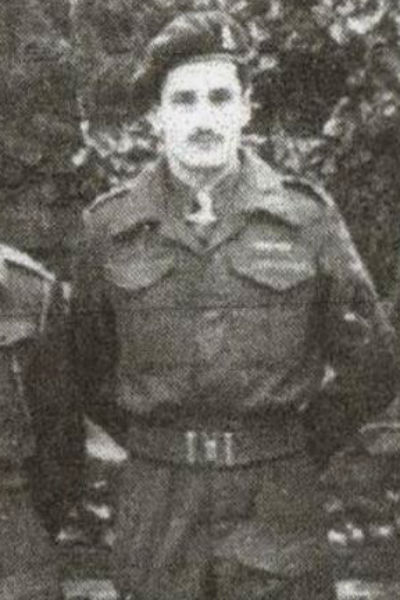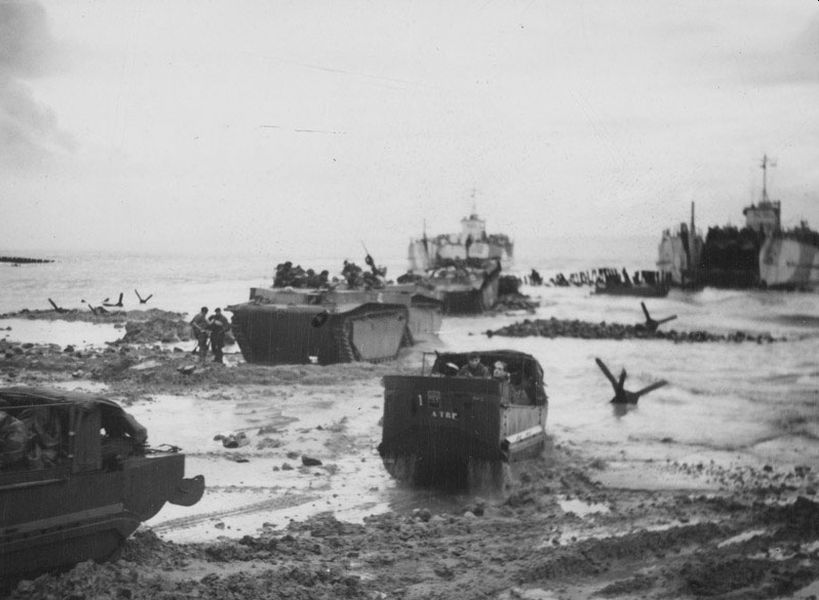Linzel, Jan
- Date of birth:
- August 18th, 1918 (Zaandam, the Netherlands)
- Date of death:
- February 6th, 2009 (Voorburg, the Netherlands)
- Nationality:
- Dutch
Biography
After the Second World War, Jan Linzel served from 1968 until 1984 as Military Attaché in Indonesia.
Promotions:
?: Vaandrig
1st May 1946: Kapitein;
16th August 1952: Majoor;
1st May 1958: Luitenant-kolonel;
1st January 1966: Kolonel der Infanterie;
?: Brigadegeneraal.
Do you have more information about this person? Inform us!
- Period:
- Second World War (1939-1945)
- Rank:
- Vaandrig (Warrant Officer 1st Class)
- Unit:
- Wapen der Infanterie
- Awarded on:
- November 6th, 1941
Royal Decree No. 5, dated 6th November 1941.
- Period:
- Second World War (1939-1945)
- Unit:
- No. 2 (Dutch) Troop, No. 10 (Inter-Allied) Commando, 4th Commando Brigade, First Canadian Army, Canadian Army
- Awarded on:
- September 5th, 1946
- Awarded for:
- Operation Infatuate II
"This officer was a member of Dutch Troop of No. 10 Inter-Allied Commando from its formation in 1942 and took command in 1943 until thr Toop was disbanded in August 1945. In 1943 his Troop was sent to India to take part in the Burma campaign but was recalled for operationsin Europe in 1944.
A section of the Troop took part in airborne landings at Arnhem and suffered severe casualties in both men and material. After the evecuation had taken place Captain Linsell collected together his remaining men and reported with them to duty with No. 4 Commando Brigade, which formation was preparing for attack on Walcheren Island.
Before his men could be got ready for another battle it was necessary for them to be completely re-equipped. The speed with which this was accomplished was due in no small way to the energy and drive of Captain Linsell. When the operation was over he returned to England in oder to train 100 men whom he had recruited while he was in Holland, to be ready for battle before the end of the war. So successful was he in his efforts that, by March 1945, he was able to report that the men were ready in all respects for active service. It was therefore, possible to employ his force in the closing stages of the European War.
Throughout his service with No. 10 Commando, Captain Linsell's loyalty to his Commanding Officer and to the British Army as a whole was intense. There were many obstacles to be faced before men of another country, some of whom spoke no English, could be welded into an efficient fighting unit of the British Army, but the task, however difficult, was successfully carried out. That this was so due in no small way to this officer's keeness, perseverance and outstanding devotion to duty."
British Royal Approval on September 5th, 1946.
Permission granted to wear by Royal Decree on December 3rd, 1946.
Presented in the Hague on October 18th, 1948.
- Period:
- Second World War (1939-1945)
- Rank:
- Kapitein (Captain)
- Unit:
- Wapen der Infanterie (Infantry)
- Awarded on:
- May 12th, 1951
Recommendation:
For having distinguisghed himself by having performed particularly courageous and tactful deeds in combat against the enemy, having reported voluntarily to be posted to a British so-called Commando or some other unit as far back as 1942:
1e. having traveled by Jeep on September 29th, 1944 from Brussels to Nijmegen and having rendered meritorious services while posted to Headquarters 1st Allied Airborne Army;
2e. having landed November 1st, thereafter at Westkapelle along with Headquarters 47 Royal Marine Command under intens hostile fire, the vessel on which he traveled having been hit twice;
Subsequently, on November 2nd, having joined the sub section of 47 Commando, established by Dutch military personell or having joined the Staff of this Command, at all times having fearlessly moved forward under heavy hostile mortar and machinegun fire and having directed operartions as much as possible.
Finally, on November 3rd having taken part, along with the Dutch team, in charging of the last enemy-held strongpoint near Zoutelande and having discovered that, after the strongpoint had been taken, many men, who had been injured by hostile mortar fire hitting close by had been left behind and having helped a seriously injured man be evacuated to the rear where medical aid could be administered.
Royal Decree Nr. 29, dated May 12th, 1951.
For having distinguisghed himself by having performed particularly courageous and tactful deeds in combat against the enemy, having reported voluntarily to be posted to a British so-called Commando or some other unit as far back as 1942:
1e. having traveled by Jeep on September 29th, 1944 from Brussels to Nijmegen and having rendered meritorious services while posted to Headquarters 1st Allied Airborne Army;
2e. having landed November 1st, thereafter at Westkapelle along with Headquarters 47 Royal Marine Command under intens hostile fire, the vessel on which he traveled having been hit twice;
Subsequently, on November 2nd, having joined the sub section of 47 Commando, established by Dutch military personell or having joined the Staff of this Command, at all times having fearlessly moved forward under heavy hostile mortar and machinegun fire and having directed operartions as much as possible.
Finally, on November 3rd having taken part, along with the Dutch team, in charging of the last enemy-held strongpoint near Zoutelande and having discovered that, after the strongpoint had been taken, many men, who had been injured by hostile mortar fire hitting close by had been left behind and having helped a seriously injured man be evacuated to the rear where medical aid could be administered.
Royal Decree Nr. 29, dated May 12th, 1951.
- Period:
- Second World War (1939-1945)
- Period:
- Second World War (1939-1945)
- Period:
- Second World War (1939-1945)
- Period:
- Second World War (1939-1945)
Sources
- Photo 1: Pauline van Till
- - "Brons", Nr 63, 18e Jaargang, uitgave van de Vereniging Dragers Militaire Dapperheidsonderscheidingen 2009
- "Brons", Nr 66, 19e Jaargang, uitgave van de Vereniging Dragers Militaire Dapperheidsonderscheidingen 2010
- The Dutch Medals Page











